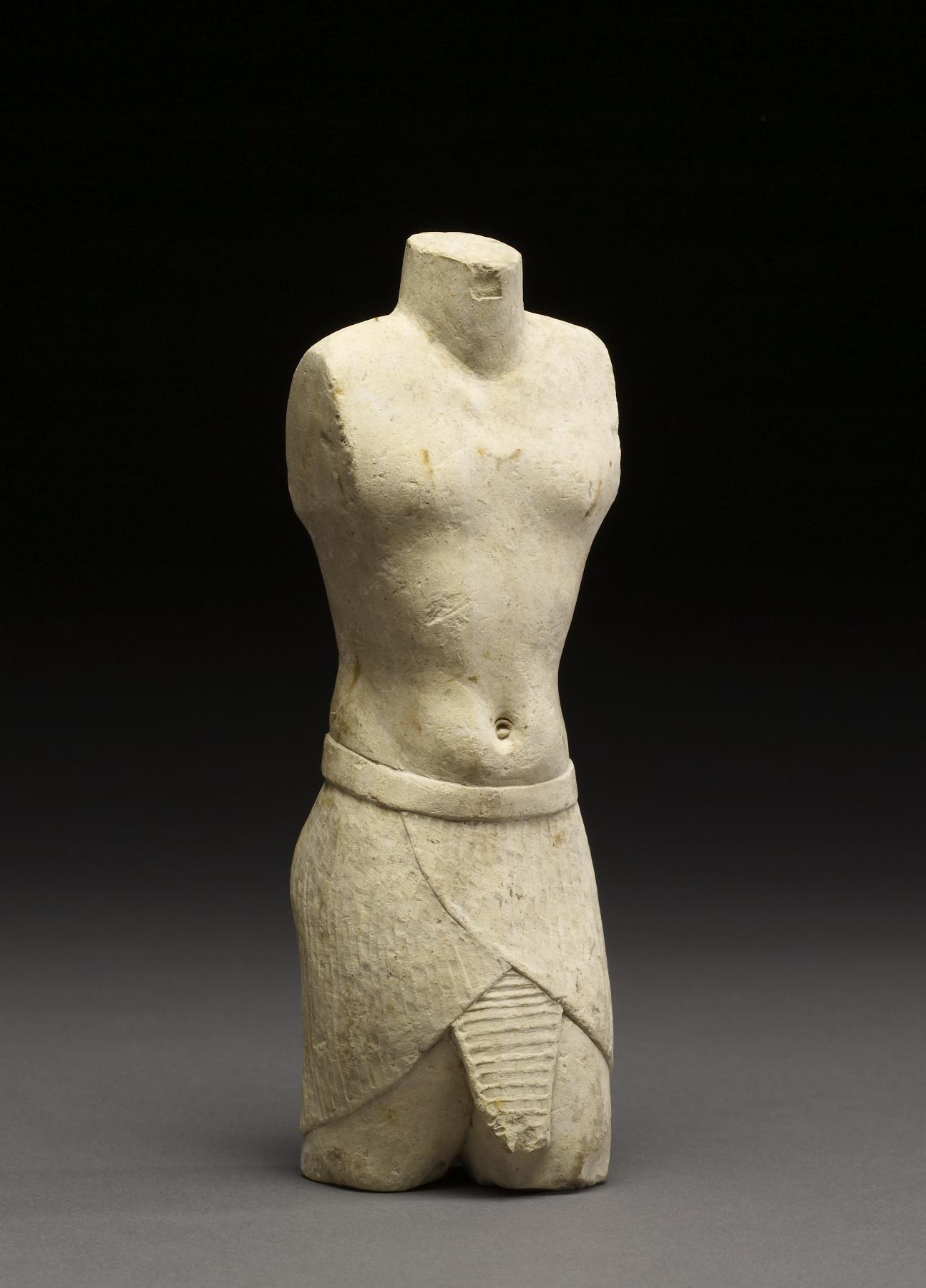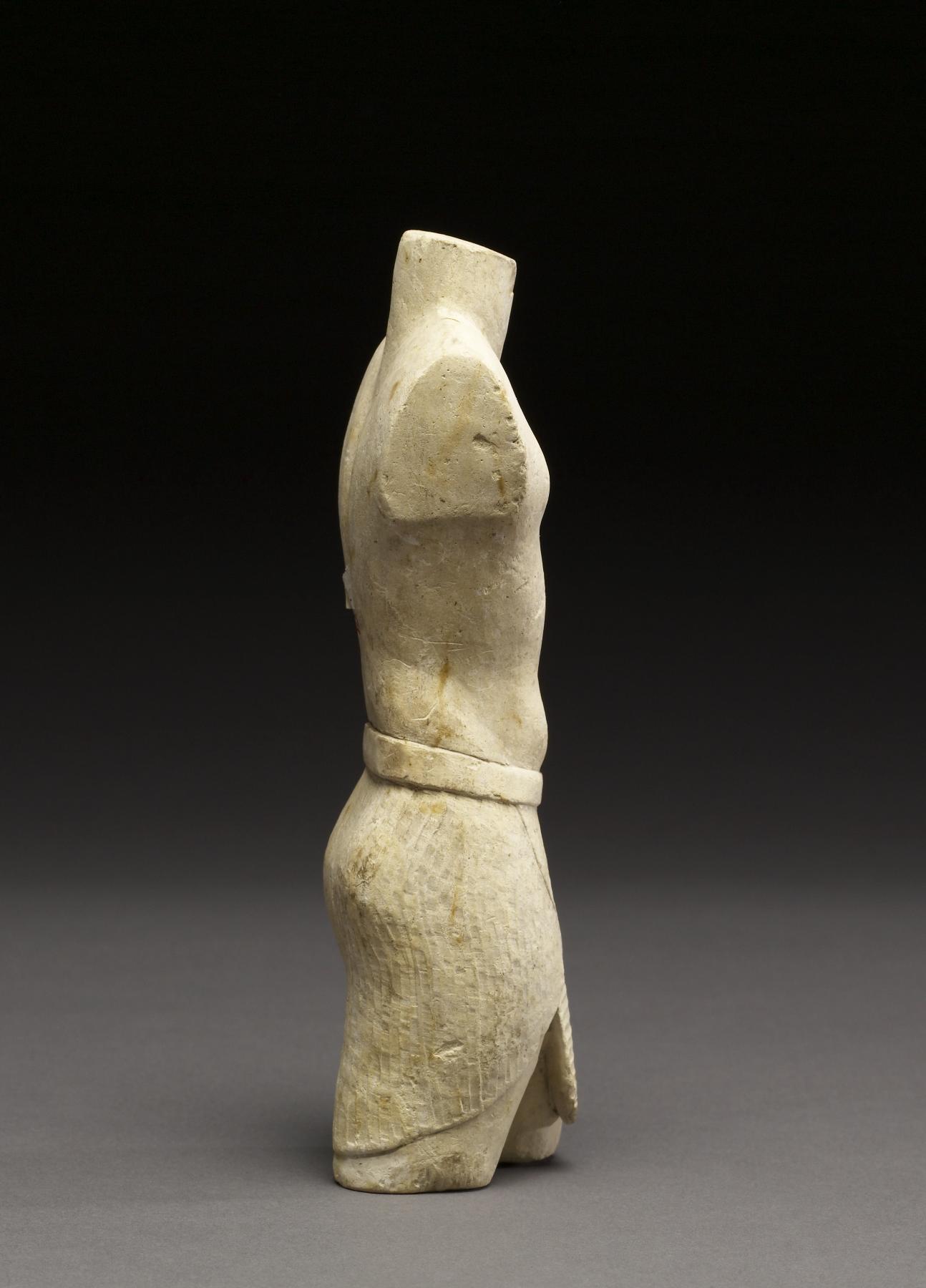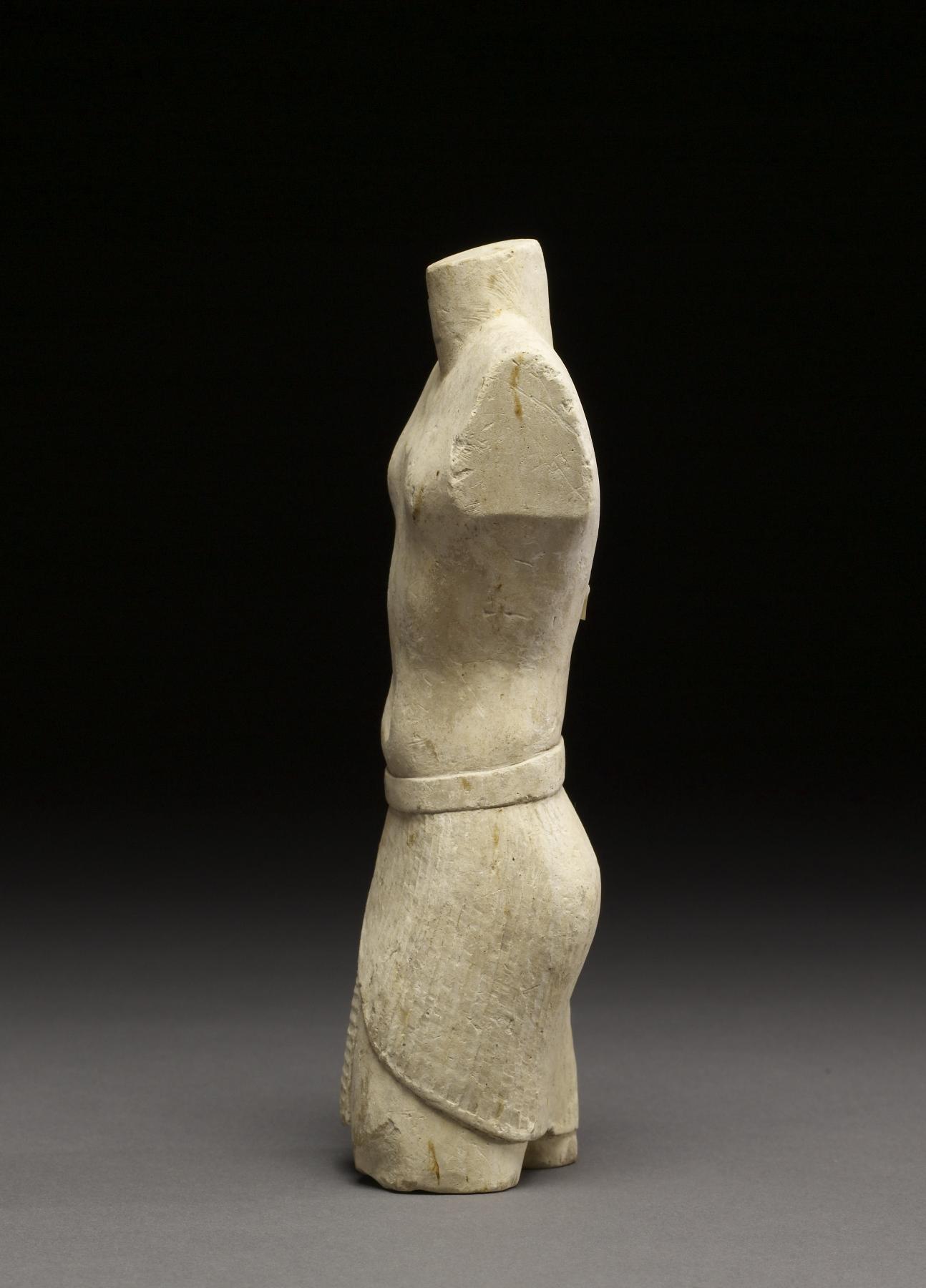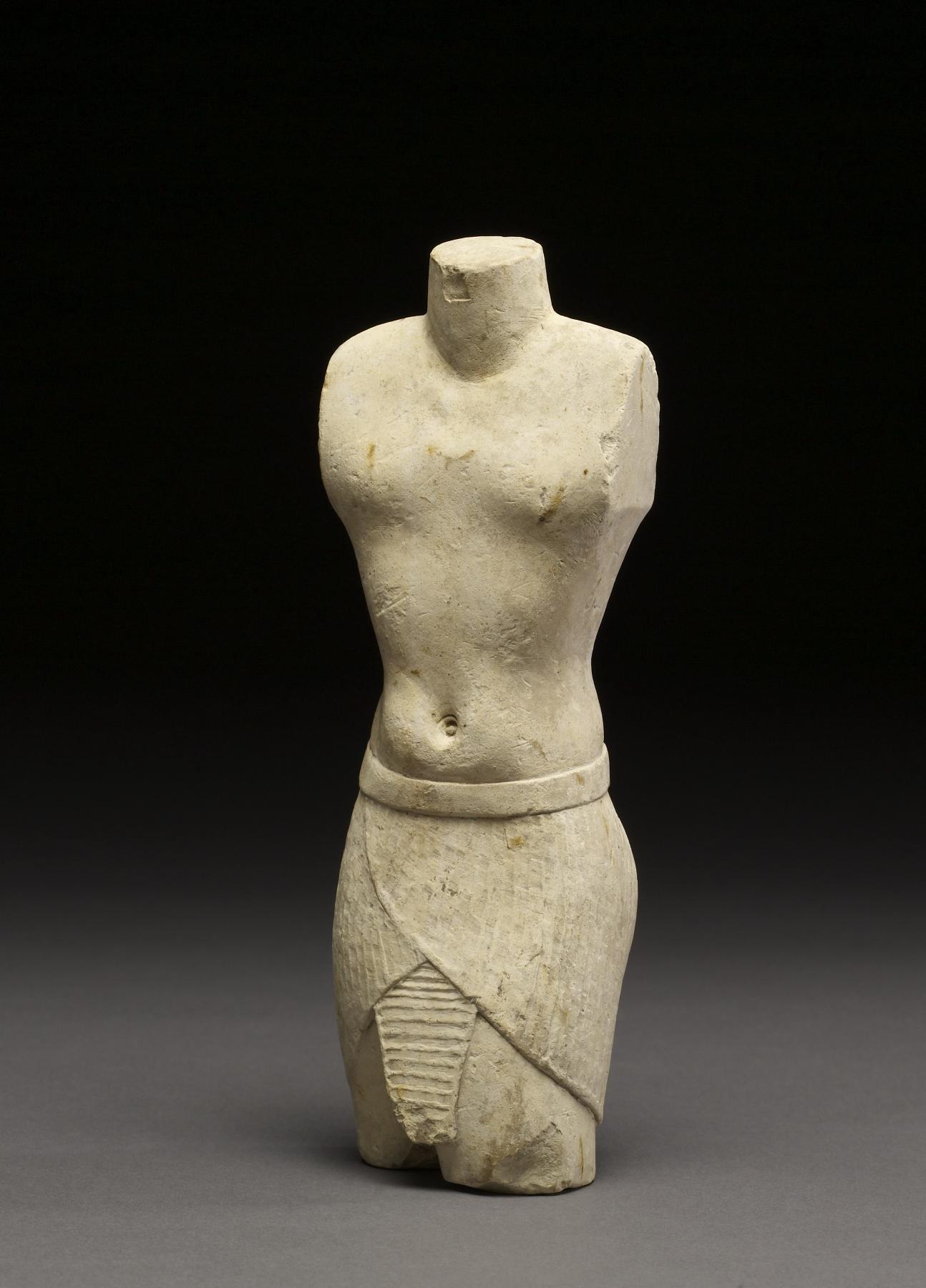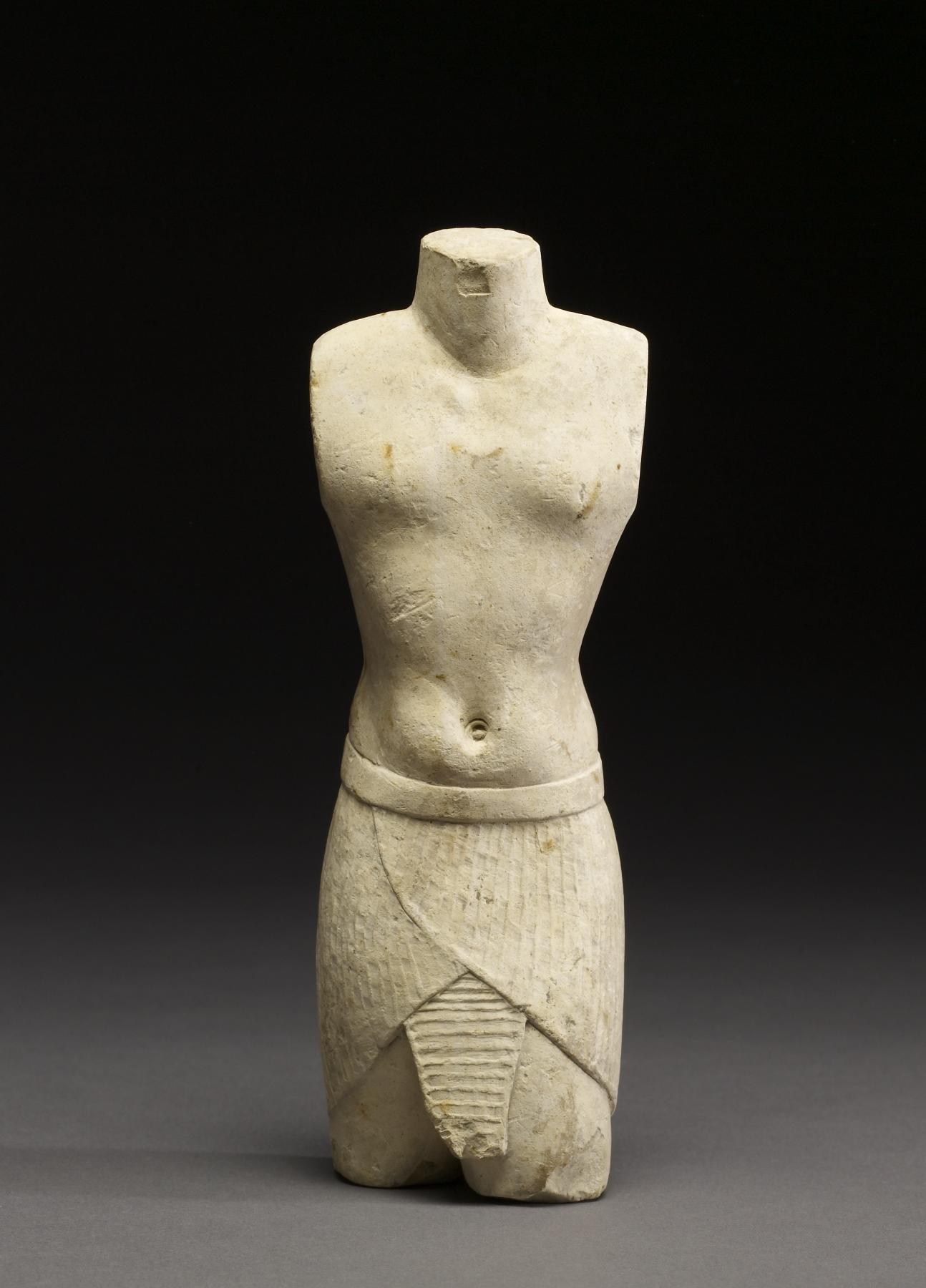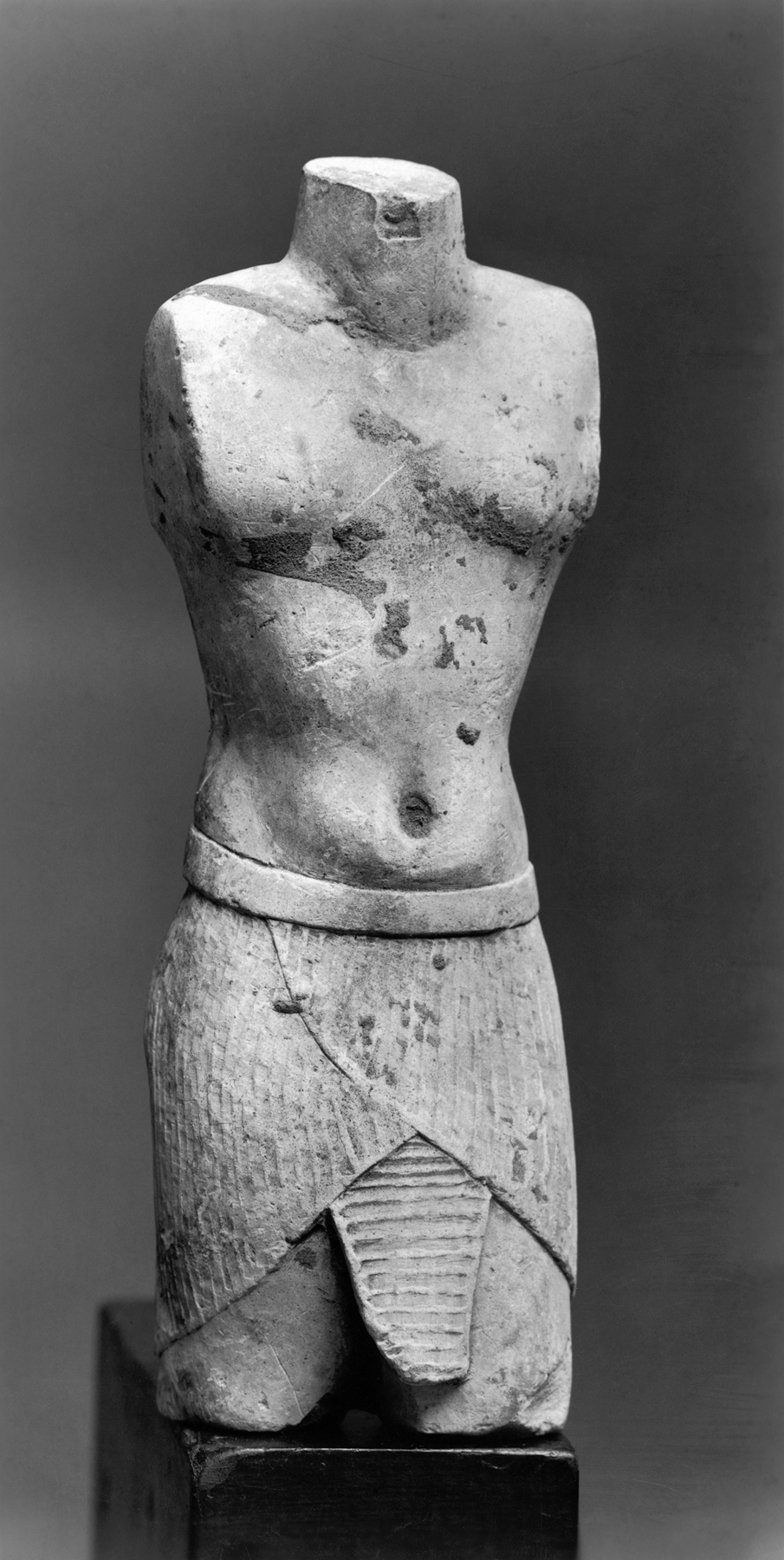Model Torso
(Ancient Egypt and Nubia )
Sculpture models, such as this example, were used by artists in the Ptolemaic and Roman periods. This model appears to be complete, despite the lack of head, arms, and lower legs. The grid lines on the legs helped to keep the proportions. The statue is dressed with a shendit-kilt. Such models may also have served a votive purpose in a temple setting.
Provenance
Provenance (from the French provenir, 'to come from/forth') is the chronology of the ownership, custody, or location of a historical object. Learn more about provenance at the Walters.
Dikran Kelekian, New York and Paris, [date and mode of acquisition unknown] [said to be from Dendera]; Henry Walters, Baltimore, 1912, by purchase; Walters Art Museum, 1931, by bequest.
Conservation
| Date | Description | Narrative |
|---|---|---|
| 5/9/1972 | Treatment | cleaned |
| 4/2/1974 | Treatment | cleaned |
| 9/15/1975 | Treatment | cleaned |
| 8/6/1998 | Examination | survey |
Measurements
6 13/16 x 2 7/16 x 1 7/8 in. (17.3 x 6.2 x 4.7 cm)
Credit Line
Acquired by Henry Walters, 1912
Location in Museum
Accession Number
In libraries, galleries, museums, and archives, an accession number is a unique identifier assigned to each object in the collection.
In libraries, galleries, museums, and archives, an accession number is a unique identifier assigned to each object in the collection.
22.32

